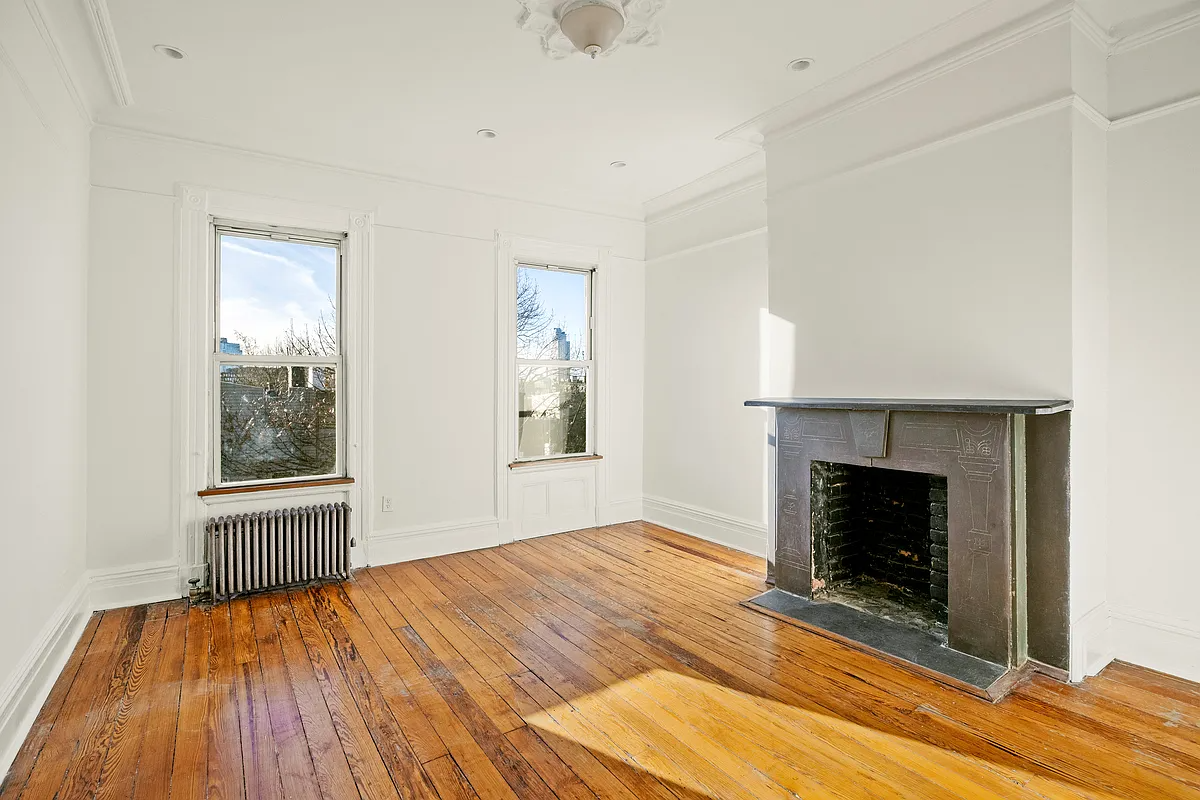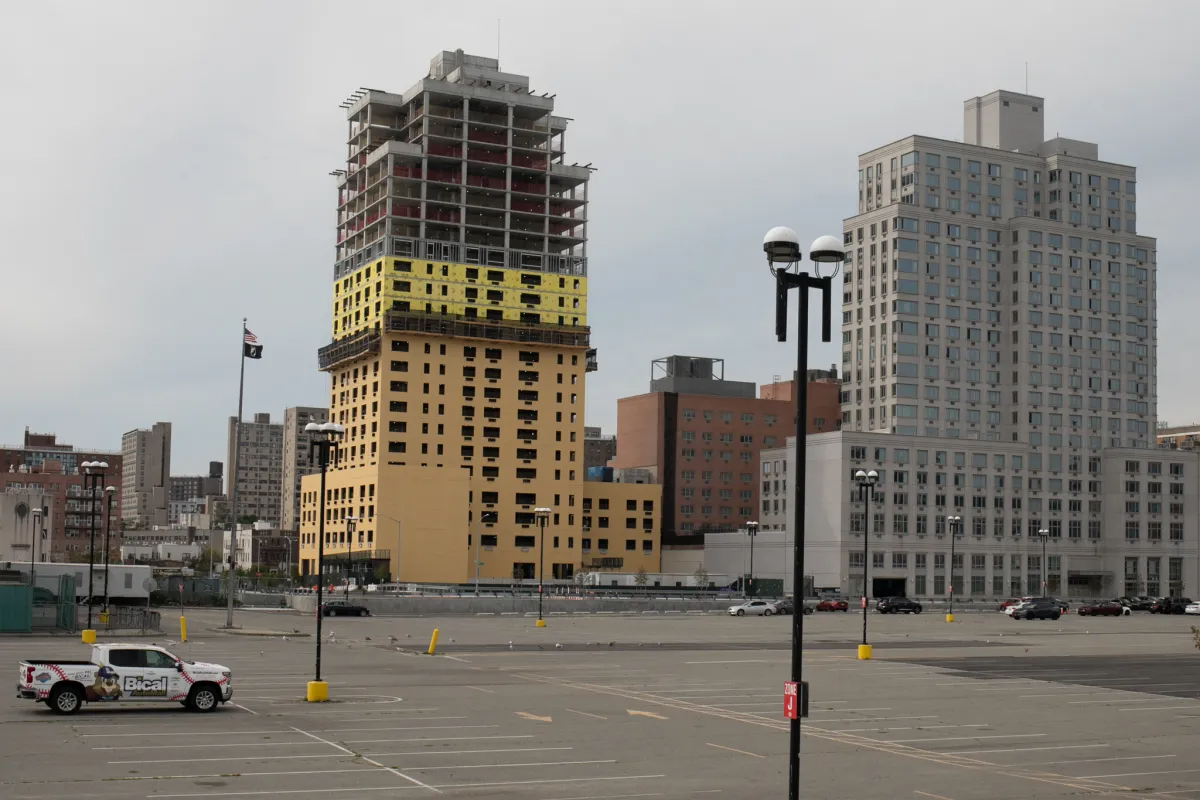How Bed-Stuy Looks From L.A.
The L.A. Times takes a lengthy look at gentrification in Bed-Stuy in a piece that focuses on how (or whether) the opening of the Mynt, the luxury rental on Nostrand and Myrtle, is changing the area. One side of the story, via Mama Ruth, an 87-year-old grandmother and neighborhood fixture who pays $200 a month…


The L.A. Times takes a lengthy look at gentrification in Bed-Stuy in a piece that focuses on how (or whether) the opening of the Mynt, the luxury rental on Nostrand and Myrtle, is changing the area.
One side of the story, via Mama Ruth, an 87-year-old grandmother and neighborhood fixture who pays $200 a month for her one-bedroom at the Marcy Projects, where she’s lived for 55 years:
Lately, though, a new crop of folks has been moving into the neighborhood, and they don’t talk to Mama Ruth the same. She might pass them at the corner store, or near the subway stop. They’ll nod and smile, and she’ll do the same. But for the most part, Mama Ruth gets out of their way, and they get out of hers.
Another side, focusing on one of the Mynt’s renters:
Everyone outside stared when Randolph Ambroise moved into the second-floor three-bedroom corner apartment at the Mynt. Ballplayers, cops, loiterers, corner store patrons. “Everybody was watching us, like we were celebrities,” he says. Ambroise, 29, a Manhattan real estate agent, and his two roommates were among the first tenants. They got a deal: $3,100 a month. One of the first nights, Ambrose watched five police cars with sirens blaring and lights flashing pull up to the corner. Officers jumped out and ran down the street alongside Marcy. Hoping to block the drama and gawkers outside, the roommates went to Home Depot and bought bundles of window shades…Ambroise had a car, but he didn’t want to pay to park it in the Mynt’s garage, and donated it to charity after it got broken into twice on the street. When he goes to work in a suit, people ask for change.
Manhattan Skyline Views, Brooklyn Projects Below [LA Times]





1:19, i don’t even know where to start in pointing out the flaws in your argument. the rich will never live in bed/stuy, so how will they benefit again by taking on a huge, expensive (politically and monetarily) construction project to provide luxury housing that no one can afford to buy once the economy melts down?
There are some examples of gentrification in L.A. West Adams is a neighborhood with historic big Victorians that saw a big downturn in the 60’s and 70’s and then started changing again. The Eastside neighborhoods were low income latin neighborhoods, became hip in the 90’s and changed again. And what about their downtown lofts developments?
But I agree with someone who said:
“The irony is that in LA, almost all neighborhoods are still incredibly segregated, much more so than in nyc.”
I’m a former L.A. resident. When my friends and I moved there in the early 90’s after college we seriously wondered where all the black people had gone. It’s a very segregated city, so much you can go weeks if you live on the Westside (god forbid) without seeing a black person. Classic limousine liberal town. They’re obsessed with status. Obsessed. It used to be cloaked in phoney new age spiritualism and now, environmentalism-as-religion. Anything that makes them feel important. All this coming from people who all drove SUV’s up until just a few years ago. I used to count them. 1 car for every 8 or 9 SUV’s. And they still live in those huge massive houses. Hardly “green” to run those things.
Everything that’s ever said about the people in L.A. is true. It really is.
Look, it’s only a matter of time before the Marcy PJ’s and the like are raised for “luxury” housing. The city is heading for dangerous economic times and soon won’t be able to maintain public housing, thus selling the land to private developers to raise capital. With oil nearing $150 a barrel and showing no signs of retreat, we just entered the first stage of economic warfare. The owners of this world will see their fortunes decrease, as a result of high energy prices, and will take it out on everyone else via layoffs, cut backs, outsourcing, you name it. The rich never lose, remember that. The What is right, it’s going to get real ugly around here.
This building kinda looks like a housing project of the future, so in a way it’ll fit right into this neighborhood.
The G train is one LOOOONNNGG block away. One head-down, iPod-clutching, eyes-averted scurry away. Ample time to get jumped.
Ssseeeeeee yaa!!
I don’t understand why people pay to live in the an area where there are a vast number of housing projects?
The housing projects will always be there. How much value will your property appreciate if it’s next to a project?
Will quality of life change or do you still have to keep in mind that you live in the hood and have to watch your back?
And you learned how to write ebonics at Yale?
Sho ya right Bxgrl
Word up, Bxgrl! You said what I wanted to. And 11:54, I was born and raised here. Went away to college, came back to NYC and received a doctorate, work hard at “important” work, and I still can’t afford NYC prices! As Bxgrl said, what would you do if all those who couldn’t afford NYC left? You could not survive!
As for bed-stuy not being a ghetto…um, sho’ ya right! Just because people with too much money have moved in doesn’t mean it isn’t a ghetto. And being a ghetto is not necessarily a bad thing unless you’re an elitist snob who thinks you’re above everyone else! I grew up in the ghetto (east Harlem), was educated at a private secondary school, went to Yale as an undergrad and am damn proud to be a child of the ghetto!
“The G is right down the block from here, t’What.”
That’s still a loooooooong walk, I mean run, when you’re literally across the street from MARCY. Be home before nightfall.
To pay that kind of money to live across the street from ANY project is akin to going to a seafood restaurant and picking a lobster out of the tank. The people who make thier living by stealing from others will say,oh, who shall I rob today? Thank you Mr. developer for making it so easy for me , you brought them right to my door! People who live in the projects are not there because they want to, but because they have to. The only thing that ticks them off more is having to watch people with too much money move in next to them and then act as if the neighbourhood saviour has come at last.If people really want to move into an area that is cheaper they should live as those in the area do. Find a modest apartment and live alongside the people that were already there. To do it any other way is an elitist thing to do and instead of getting your neighbours to warm up to you, it draws a line in the sand that says “You are not good enough to cross this line and live here so I will just wait until you get fed up and move away. It’s my neighbourhood now”.